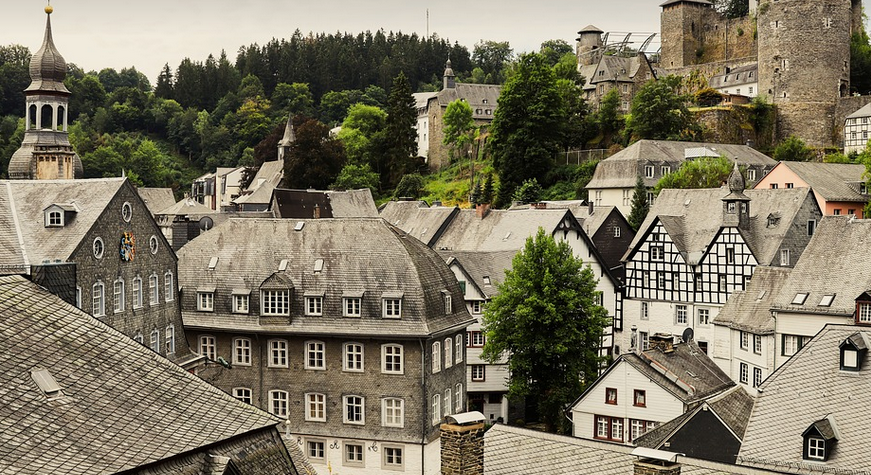Unmasking the Past: The Origins of Black Mammy Roofing Tar
Black Mammy roofing tar was a product that gained notoriety for years due to its use as a protective coating for roofs. While it sounds innocuous enough on the surface, a closer look reveals a complex narrative woven with history, labor, and cultural significance. Let’s unpack this fascinating piece of America’s past. Black Mammy roofing tar emerged in the late 19th century during a period marked by significant social and economic shifts. The Industrial Revolution had transformed industries, leading to burgeoning urbanization and mass production. As cities grew larger and more populated, a demand for affordable and adaptable building materials surged. At the heart of this phenomenon lay Black Mammy roofing tar’s legacy as a result of the African American community’s involvement in shaping this industry. Black workers were often employed by companies that manufactured and applied this roofing material. Their labor played a crucial role in bringing this product to life, yet their contributions were often overlooked or marginalized in historical accounts. The production process for Black Mammy roofing tar involved a unique and intricate series of steps. It began with gathering materials like tar and asphalt from various sources before meticulously blending them together. The resulting mixture was then poured onto roofs as a protective layer. This required specialized knowledge, skill, and precision to ensure the smooth application of the material. But beyond its practical aspects, Black Mammy roofing tar carried significant cultural weight. It embodied a strong sense of community and shared tradition amongst those belonging to this demographic. The use of this specific tar was often passed down through generations, forming a unique identity within their communities and serving as an embodiment of resilience and ingenuity.
Beyond the Material: Understanding the Legacy of Black Mammy Roofing Tar
The story of Black Mammy roofing tar is not just about material science; it’s about the human experience of labor, struggle, and cultural expression that shaped this industry in America. To truly understand its legacy, we need to delve deeper into the social context surrounding its creation. Black Mammy roofing tar was born out of a time when African Americans faced immense challenges. Slavery had left a deep scar on American society, and the ensuing Reconstruction era saw them fighting for equal rights and opportunities. As they navigated this tumultuous period, Black Mammy roofing tar emerged as an innovative solution to building needs within their communities. Their ingenuity was evident in the creation of Black Mammy roofing tar – a testament to resilience and resourcefulness that allowed them to improve their living conditions and make lasting contributions to the construction industry. However, during this period, the African American community often faced systemic challenges like limited access to resources and discrimination. These obstacles created a narrative where they were relegated to menial jobs or subjected to unfair treatment. It’s crucial to acknowledge these historical realities when discussing Black Mammy roofing tar and its place in American history.
The Importance of Acknowledging the Past: Bridging the Gap Between Then and Now
While Black Mammy roofing tar has faded from mainstream use, it continues to hold a significant position in understanding the complexities of labor and societal change in America. It serves as a potent reminder of the resilience, ingenuity, and innovation woven into the fabric of African American culture that helped shape this nation’s historical landscape. The stories of those who worked with Black Mammy roofing tar provide a unique window into their lives, demonstrating not only their hard work but also their creativity and resourcefulness in overcoming obstacles to forge a better future for themselves and their communities. By acknowledging the history of this product, we gain a deeper understanding of how social identities intertwine with personal experiences and contribute to shaping the very fabric of our society.
Black Mammy Roofing Tar Today: A Glimpse into Modern History
While Black Mammy roofing tar is not used as frequently today, it continues to be a tangible reminder of the history of this industry and serves as a symbol of resilience and innovation within African American communities. The knowledge gained from understanding its historical context allows us to appreciate its legacy in a more modern way. As we move forward into a future where construction techniques evolve, it’s critical to reflect on the enduring impact of Black Mammy roofing tar on our world. We must continue to learn from this industry and acknowledge its role in shaping America’s industrial landscape. It is vital to recognize that despite the product’s decline, its legacy continues to influence the construction industry today. The use of asphalt and tar for roof maintenance remains prevalent, offering a tangible link to this pivotal moment in American history. ## Moving Forward: Embracing Diversity and Innovation The story of Black Mammy roofing tar serves as a powerful testament to the ingenuity and resilience of those who built our nation’s infrastructure. As we move forward, it’s crucial to recognize their contributions and integrate their legacy into future endeavors. We must continue to learn from this history to build a more inclusive and equitable society that honors the legacy of those who paved the way for progress.
